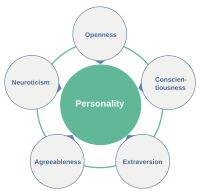
Photo from wikipedia
In the time of the COVID-19 pandemic, people are often faced with uncertain risky choice. Risky choice will be affected by different descriptions of the event’s gain or loss framework,… Click to show full abstract
In the time of the COVID-19 pandemic, people are often faced with uncertain risky choice. Risky choice will be affected by different descriptions of the event’s gain or loss framework, this phenomenon is known as the framing effect. With the continuous expansion and in-depth study of frame effects in the field of risky choice, researchers have found that the are quite different in different situations. People have different interpretations of the same event at different psychological distances, and will also be affected by their own emotions. Therefore, the current study examines the common influence of task frame, spatial distance, and trait emotion on risky choice through two studies. Study 1 used a 2 (framework: gain vs. loss) × 2 (trait sentiment: high vs. low) inter-subject design, and the dependent variable is the choice of the rescue plan for the classic “Asian disease” problem. The results revealed that trait anger did not predict individuals’ risky choice preferences, and high trait anxiety led individuals to be more risk-averse. The framing effect exists in risky choice, and individuals prefer risk seeking in the loss frame. Study 2 used a 2 (spatial distance: distant vs. proximal) × 2 (framework: gain vs. loss) × 2 (trait sentiment: high vs. low) three-factor inter-subject design in which the dependent variable is the choice of rescue plan. The results indicate that the framing effect also exists in risky choice, and individuals prefer risk seeking in a loss frame. High trait anxiety lead individuals to be more risk-averse, while trait anger has no significant predictive effect on risk preference. Distant spatial distance lead individuals to increase their preference for risk-seeking under the gain frame, which leads to the disappearance of the framing effect. In conclusion, trait anxiety and spatial distance have a certain degree of influence on risky choice under the framework of gain and loss.
Journal Title: Frontiers in Psychology
Year Published: 2022
Link to full text (if available)
Share on Social Media: Sign Up to like & get
recommendations!